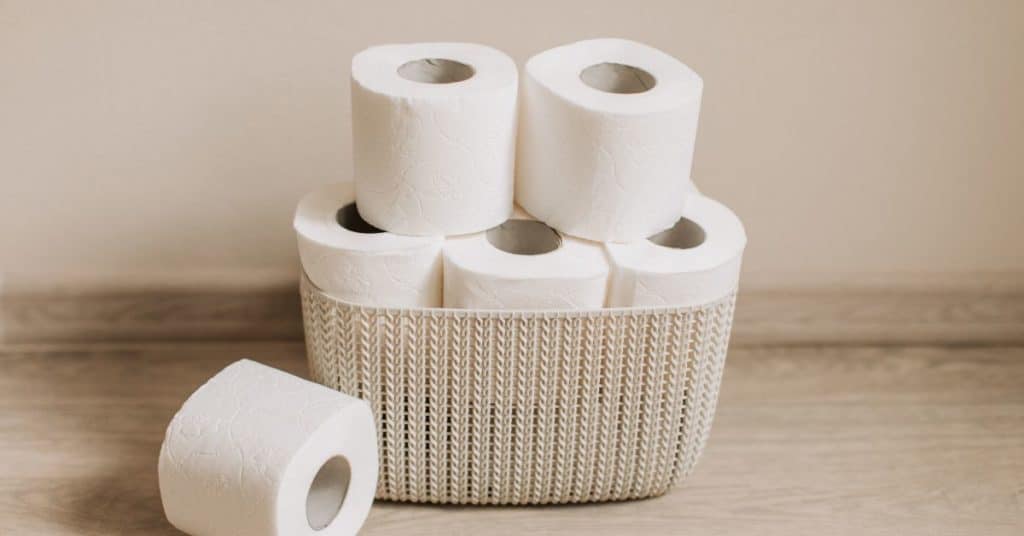
Constipation is a common problem in children. But just because it’s common doesn’t mean it’s acceptable. I’ll never forget it – My friend took her child to see a practitioner because she was concerned about her child’s infrequent and pebble-like bowel movements. The practitioner brushed it off as “no big deal.” But it is a big deal! As a dietary practitioner, I know constipation is a sign of gut dysfunction. As a patient, with a long-standing history of constipation secondary to my undiagnosed celiac disease, I can tell you there’s nothing healthy about constipation. As a parent, I’ve witnessed the mental and physical changes that arise when your 2 year old is constipated and crying. Let’s focus on helping parents prevent constipation.
After all, a sluggish digestive system impacts the entire body causing a cascade of symptoms including:
- abdominal discomfort
- fatigue
- headaches
- skin changes
- irritability, and
- much more

To know how to prevent it, one must get to the root cause of the sluggish bowel. In kiddos, constipation is most likely due to dietary transitions (such as advancing from liquids to solids), food preferences of the picky eater, or toilet training. As parents and caregivers, it is our duty to ensure that our children are given the best environment for gut health and gut function. In the early years it is important to establish the rhythm of the intestines. At birth the intestines require additional care as they mature. We want to nurture that development and make sure that constipation does not become routine. How do we do this? Let’s look at some simple steps to help your kids poop regularly. I call this the 3F’s – fluid, fiber, and fun!
As parents and caregivers, it is our duty to ensure that our children are given the best environment for gut health and gut function.
The 3 F’s to Help You Naturally Relieve Your Toddler’s Constipation

1. Increase Fluids When Your 2 Year Old Is Constipated and Crying
Most kids (ages 1 and up) need help drinking enough water to meet their needs. When they’re babies, we do a great job of hydrating them because they are consuming liquids as their form of nourishment. As we transition to solid foods, water can often take a back seat to the new world of colors, textures and flavors. Foods like fruits and vegetables do provide fluids but they do not provide enough to meet our daily needs. See below for a chart of fluid guidelines for your child.
| AGE | FLUID GOAL |
| Children 1-3 Years | 4 cups per day |
| Children 4-8 Years | 5 cups per day |
| Children 9+ Years |
7-8 cups per day |
The best fluid choice is water. If your child needs a little flavor, feel free to add fruit, vegetables and herbs to flavor the water. You can place these food items directly in the water or freeze them in water to make jazzed up ice cubes. Herbal teas can also be used to lightly flavor water. If your child enjoys juice, dilute it to increase water intake and reduce sugar intake. You can also make homemade fruit popsicles to satisfy their sweet tooth and increase fluid intake.
Milk is another good source of hydration and can be sourced from cows or non-dairy sources. If it’s not the flavor that is discouraging the child, try to provide a fun vessel for water. A favorite colored or graphic designed water bottle might be just the incentive your child needs to increase her fluid intake.
Before you check in on your child’s daily hydration intake, it is important to check on your daily water consumption. Are you meeting your needs? Are you modeling this behavior for your child? Kids love to mirror the behavior of their parents and caregivers.

2. Add Fiber When Your Child is Having Trouble Pooping
Fiber is another key factor in maintaining a timely digestive process. The fibers found in foods are not digestible. This allows them to help push food through the intestines while other sugar, carbohydrate and fat dense foods tend to slow down the transit time. If it were up to kids, most would gravitate toward a carbohydrate dense diet. It is important to expose children to fiber rich foods from an early age.
The most recent Dietary Guidelines for Americans recommend that children as young as 12 months should have 19 grams of fiber daily with 18-year-old males consuming upward of 31 grams of fiber daily. See chart below for fiber guidelines. Most adults do not meet the fiber goal for two-year olds. Fiber supplementation is not necessary to meet these guidelines. Each age group can achieve their fiber intake goal with a balanced diet that includes a variety of fruits, vegetables, whole grains, beans, nuts and seeds. Refer to this document from Children’s Hospital Michigan for a detailed list of fiber content of foods. These foods can be consumed in their original form or disguised.
The most important factor is that fiber is incorporated and consumed. If your child is not meeting her daily target for fiber, it is necessary to slowly increase the fiber in her diet. Otherwise, a rapid increase in fiber may result in digestive distress.
It is important to expose children to fiber rich foods from an early age.
| 1-2 YEARS (f/m) | 2-3 YEARS (f/m) | 4-8 YEARS female | 4-8 YEARS male | 9-13 YEARS female | 9-13 YEARS male | 14-18 YEARS female | 14-18 YEARS male | |
| FIBER (grams) | 19g | 14g | 17g | 20g | 22g | 25g | 25g | 31g |

3. Make Every Day Fun to Help Naturally Relieve Constipation in Children
They say an apple day will keep the doctor away. It is true that apples are a good source of fluid and fiber. However, I argue that a dose of fun each day will also keep the doctor away. What kind of fun am I talking about? Family fun may include an impromptu dance party, an afternoon or evening walk, adventures at the local park, or a pick-up game of basketball or ping pong. Fun means movement. And, movement helps encourage natural peristalsis in the body. It also engages the abdominal muscles which support the intestines. But most of all, movement provides endorphins. Kids who experience endorphins are less stressed. Reducing stress will also help prevent constipation.
The daily goal of active play for toddlers is 3 hours per day. School aged children are recommended to have a minimum of 60 minutes per day. Most kids are not meeting this goal at daycare or school. As a parent or caregiver, you can help them meet this physical activity goal. So, what type of movement are you going to incorporate into your household? We will be dancing tonight!
A Quick Note on Causes of Constipation in Children
Your child may be experiencing constipation due to a digestive disorder or other health concern. It is best to contact your provider to ensure that you are not missing a possible root cause outside of diet and lifestyle.
So What Can You Do When You Find Yourself with a 2 Year Old Who is Constipated and Crying?
Increase the 3 F’s – Fluids (water), Fiber (fruits and vegetables), and Fun (movement)! As a pediatric dietitian, I can help you handle picky eaters and the slow increase of fiber and fluids in your child’s diet, along with simple lifestyle additions. If you’re interested in optimizing your child’s gut health for the long term, making dietary changes to stop your 2 year old from being constipated and crying, or anything else related to children’s health, send me a note.

